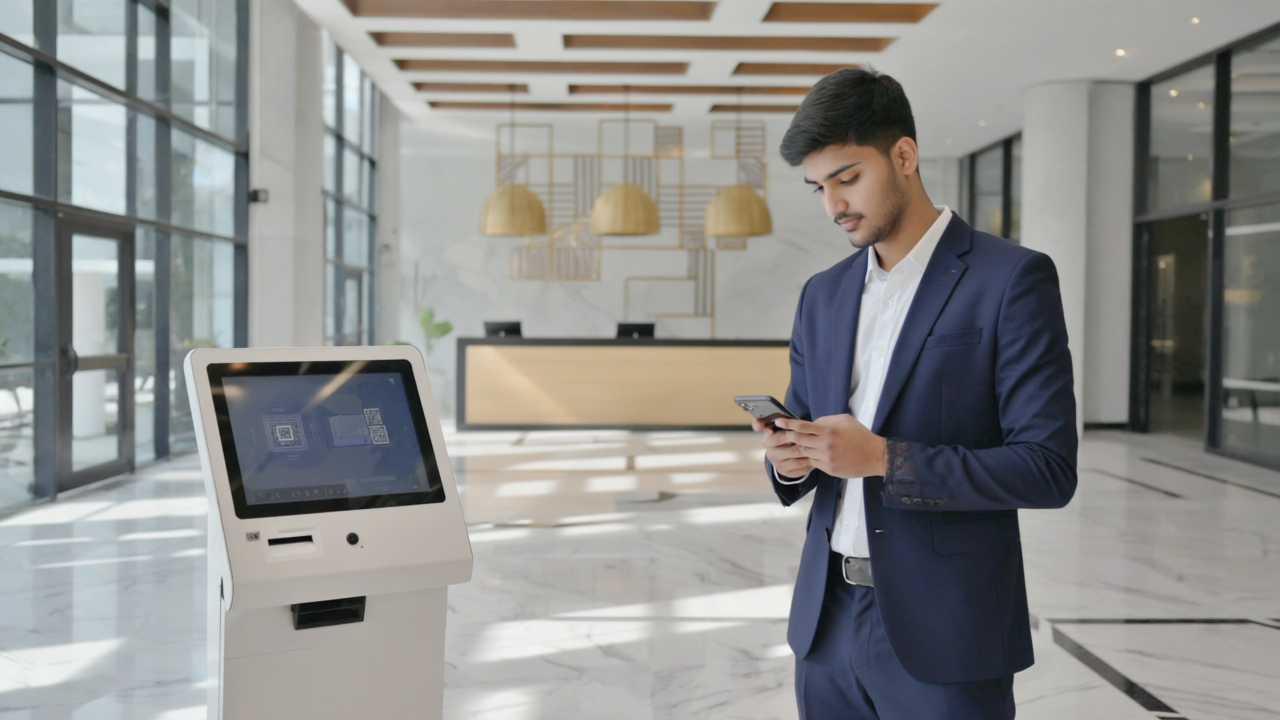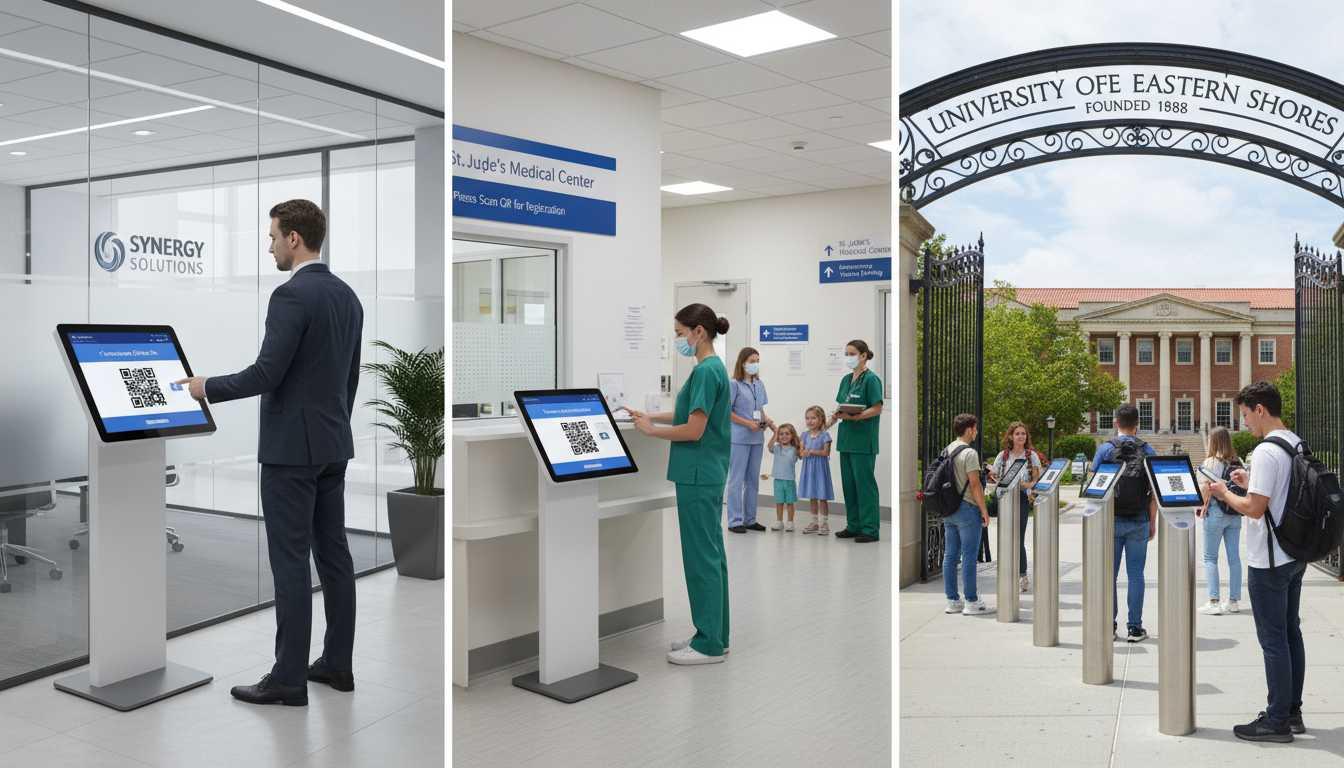
Introduction: A Shift Toward Seamless Visitor Management
In the past, traditional visitor check-ins relied heavily on manual processes, such as physical logbooks, reception desks, and paper-based identification. While these methods served their purpose for decades, they have increasingly proven to be time-consuming, prone to human error, and limited in terms of security. As businesses, schools, healthcare facilities, and government offices face the dual challenge of maintaining efficiency while protecting sensitive information, a shift toward digital transformation has become inevitable. Contactless visitor check-in systems have emerged as one of the most significant innovations in this transformation, designed to provide a more streamlined and secure entry experience.
The rise of these systems has been accelerated by global health concerns and the need to minimize physical contact, particularly during and after the COVID-19 pandemic. The demand for contactless solutions expanded beyond just convenience—it became a matter of public safety and organizational resilience. In many industries, visitor management is no longer simply about knowing who enters the building; it is about protecting staff, safeguarding assets, and creating a welcoming environment that aligns with modern expectations.
As organizations continue to adopt these solutions, the advantages become increasingly clear. Businesses not only save time and reduce administrative burdens but also enhance their brand image by presenting themselves as forward-thinking and customer-focused. With advanced features such as QR code scanning, mobile integrations, biometric verification, and real-time data collection, contactless systems are setting a new standard for visitor management.
Key Features Driving the Popularity of Contactless Systems

Contactless visitor check-in systems are more than just digital replacements for pen-and-paper logs. They bring a combination of security, efficiency, and convenience that manual processes could never match. One of the most popular features is mobile-based pre-registration, where visitors receive a digital invite with a unique QR code before arriving. This not only speeds up the check-in process but also allows security teams to maintain an accurate digital record of expected visitors. Upon arrival, guests can simply scan their code, eliminating the need for direct contact with reception staff.
Another driving feature is integration with existing security and facility management systems. Many platforms now allow for seamless synchronization with access control systems, enabling visitors to move within authorized areas without physical badges. These integrations can extend to health and safety protocols as well, such as digital health declarations, ID verification, and automated emergency notifications. The ability to adapt to industry-specific requirements makes these systems versatile and widely applicable.
Furthermore, real-time data tracking and analytics give organizations deeper insights into visitor behavior and traffic patterns. Managers can monitor visitor flow, peak times, and security compliance, all from a centralized dashboard. This not only enhances operational efficiency but also supports long-term strategic planning, such as adjusting staffing levels or improving facility layouts. These features collectively explain why contactless check-in systems are becoming indispensable in today’s fast-paced environments.
Benefits Across Industries and Everyday Operations

The impact of contactless visitor check-in systems spans a wide range of industries. In corporate settings, they offer executives and employees peace of mind by ensuring that only authorized individuals enter the premises. These systems project professionalism while reducing bottlenecks at the reception desk, improving first impressions for clients and partners. By automating visitor logs, companies also meet compliance standards more easily, which is crucial for industries handling sensitive data.
In healthcare facilities, contactless systems have become a critical part of infection control strategies. Hospitals and clinics can screen visitors for health risks prior to entry, reducing potential exposure to patients and staff. This automation reduces the workload on medical receptionists, who can then focus on patient care instead of administrative tasks. Similarly, in schools and universities, digital check-ins improve safety by keeping detailed records of who is on campus at all times, enhancing accountability and security.
Government offices, event venues, and retail establishments also benefit greatly from the scalability of contactless systems. For public sector institutions, these systems ensure smoother operations while adhering to transparency and security protocols. Retail spaces and event organizers, on the other hand, leverage these technologies to manage large crowds efficiently, creating an experience that feels both secure and convenient. The universality of the benefits makes contactless systems a future-proof solution across industries.
Future Trends and Innovations in Visitor Management

As technology continues to evolve, contactless visitor check-in systems are set to incorporate even more advanced features. Artificial intelligence (AI) and machine learning are expected to play a larger role in predicting visitor patterns, detecting anomalies, and enhancing security protocols. Facial recognition is also gaining traction as a faster, hands-free alternative to QR codes, though it brings with it important discussions around privacy and ethical use. With proper safeguards, this technology could significantly improve both convenience and accuracy.
Another emerging trend is the integration of cloud-based platforms with remote management capabilities. Organizations can now manage multiple sites from a single dashboard, ensuring consistent visitor management practices across global branches. This not only improves scalability but also reduces the burden on IT teams by centralizing data storage and updates. Enhanced encryption and compliance features are being developed to address growing concerns about cybersecurity, ensuring that visitor information remains protected.
Finally, sustainability is becoming a focus, with paperless check-ins reducing the need for printed passes, forms, and logbooks. As businesses align their operations with environmental goals, adopting digital-first visitor management systems supports eco-friendly practices while modernizing workflows. The future of visitor check-in systems will likely be characterized by seamless integrations, smart automation, and a balance between security, efficiency, and user experience.
RELATED POSTS

How QR Code Passes Are Changing Workplace Security
Over the past two decades, workplace security has undergone a massive transformation. Traditional security systems relied heavily on physical ID cards, keys, and manual verification processes. While these systems offered basic control over who could enter or exit a...
